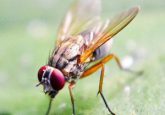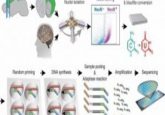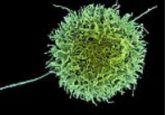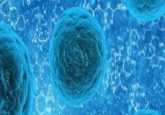Hope for HIV: mRNA vaccine displays encouraging results in animal studies

A new mRNA HIV vaccine technology encodes key proteins to form virus-like particles (VLPs) that induce neutralizing antibodies safely and effectively in animal studies with minimal side effects.
Researchers from the National Institute of Allergy and Infectious Diseases (NIAID; MD, USA) and investigators at Moderna (MA, USA) have collaborated with further institutions to test the efficacy of a preventative mRNA HIV-1 vaccine in a rhesus macaques animal model. Led by Paolo Lusso (NIAID), the teams’ results showed that the vaccinated animals had a 79% risk reduction of contracting simian-human immunodeficiency virus (SHIV). Overall, the study indicates that this new vaccine formulation could be a promising candidate for human trials in future.
Since the global emergence of the epidemic in 1981, many advances have been made in HIV prevention, treatment, and care, but “despite nearly four decades of effort by the global research community, an effective vaccine to prevent HIV remains an elusive goal,” commented co-author Anthony Fauci (NIAID). Still, the new mRNA vaccine’s performance in animal studies offers some hope.
The multiclade mRNA vaccine is unique as it encodes instructions for the target cells to assemble two key HIV proteins, Env and Gag. Once the vaccine is administered, muscle cells are instructed to create these to proteins in order to generate VLPs which resemble HIV. These VLPs cannot induce infection or disease within the inoculated animal as they lack the complete HIV genome. However, the VLPs stimulate a strong immune response as the Env proteins embed in the surface of the VLPs make the particles highly representative of the intact virus.
 Peek behind the paper: nanomedical innovation and COVID-19 vaccines
Peek behind the paper: nanomedical innovation and COVID-19 vaccines
In this behind-the-paper interview, we talk to João Paulo Longo about his contribution to COVID-19 vaccine development through nanomedical innovations.
This was the first development in the study, as the new vaccine formulation containing mRNA for both Env and Gag improved immune response to the inoculation when tested in mice, in comparison to previous experimental vaccines that only encoded Env protein. “The display of multiple copies of authentic HIV envelope protein on each VLP is one of the special features of our platform that closely mimics natural infection and may have played a role in eliciting the desired immune responses,” explained Lusso.
After confirming safety and induction of neutralizing antibodies in mice, the Env–Gag VLP mRNA vaccine was then tested in macaques. Following a priming vaccine to optimize antibody production, the macaques received seven mRNA vaccine immunizations over a 1-year period. To ensure that broadly neutralizing antibodies were produced against conserved regions, the booster vaccines contained mRNA from two separate HIV clades different to the priming mRNA vaccine. By week 58, all vaccinated macaques had produced measurable levels of tier-2 neutralizing antibodies, as well as robust T-helper cell responses effective against 11 out of 12 HIV-1 strains in the test panel. The panel included a range of HIV strains from diverse geographic and genetic origins.
Following 13 weekly sequential mucosal challenges at week 60 (a method that best approximates modality of sexual transmission in humans), the vaccine showed partial protective effects, with two out of seven macaques demonstrating full protection against the heterologous tier-2 strain, SHIV AD8. The vaccine was remarkably well tolerated, with loss of appetite being the main side effect.
“We are now refining our vaccine protocol to improve the quality and quantity of the VLPs produced. This may further increase vaccine efficacy and thus lower the number of prime and boost inoculations needed to produce a robust immune response. If confirmed safe and effective, we plan to conduct a Phase 1 trial of this vaccine platform in healthy adult volunteers,” said Lusso optimistically.





